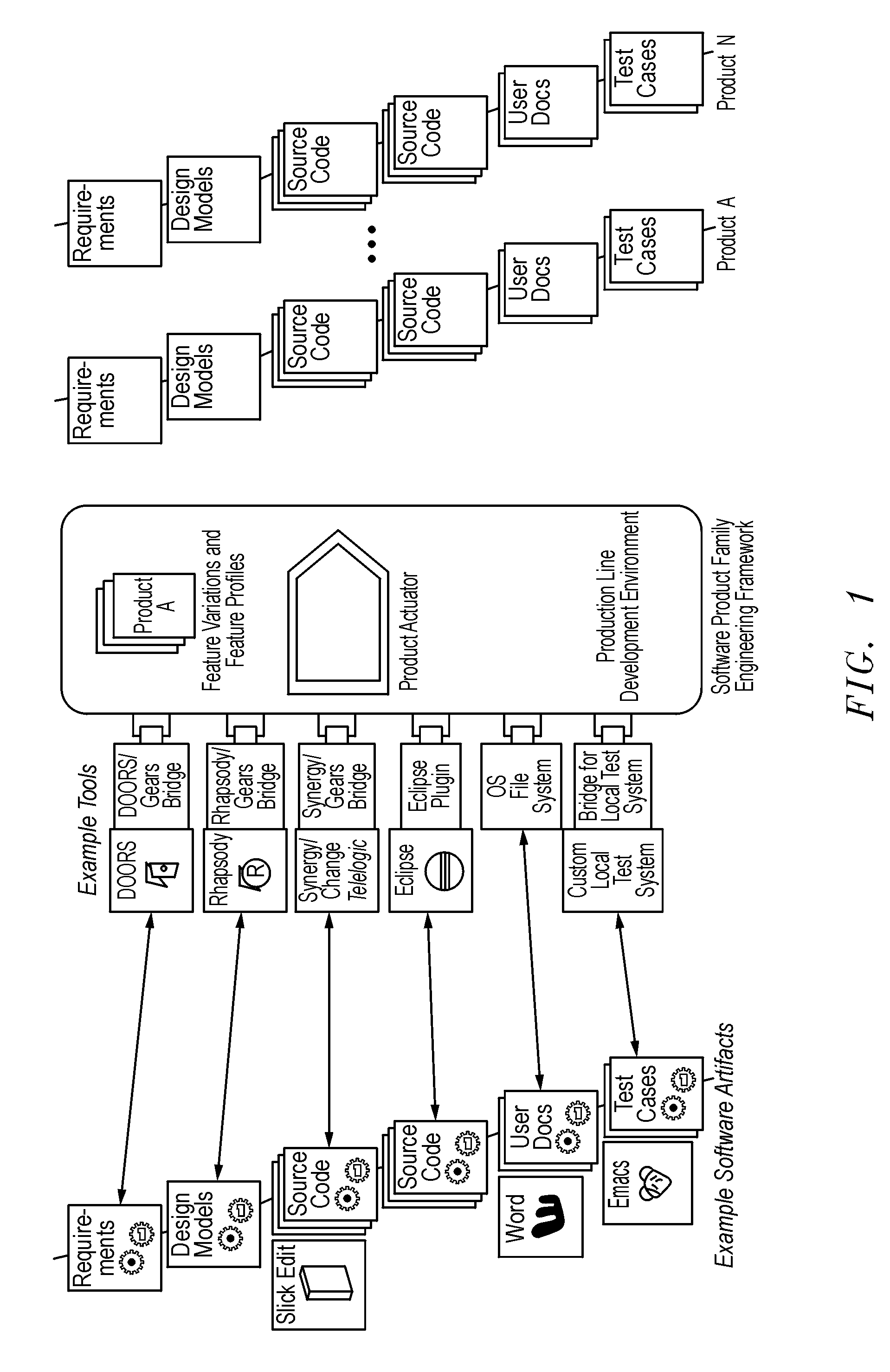Model Elements in Software Tools as Automatons in a Software Customization System and Method
a software customization and model element technology, applied in software design, version control, instruments, etc., can solve the problems of reducing the simplicity and benefits of the approach, the additional level of indirection that reduces conceptual clarity, etc., to achieve the effect of optimizing product quality, reducing development effort, and delivering more new products faster
- Summary
- Abstract
- Description
- Claims
- Application Information
AI Technical Summary
Benefits of technology
Problems solved by technology
Method used
Image
Examples
operational examples
Example 1
Adding Automatons to Unified Modeling Language (UML) Software Artifacts
[0068]A simple handset product family is shown in FIG. 2, illustrating by example the integration of a Unified Modeling Language (UML) tool into a software product family engineering framework. This product family comprises three products (the rows in FIG. 2) and four features (the columns in FIG. 2). Each feature column has an enumerated set of choices:[0069]Call Connectivity models the types of phone calls that are support on the handset, Voice only or both Video & Voice;[0070]Memory models three levels of flash RAM that can be configured on the handset, Low, Medium, or High;[0071]Call Recording models the which types of calls can be recorded for replay, None, Voice, or Voice & Video; and[0072]LED Flashlight models a boolean choice of whether or not the handset contains a built-in LED flashlight.
[0073]The three different product instances have feature profiles that can been seen across the rows:[0074]L...
example 2
Adding Automatons to Requirements Database Software Artifacts
[0089]FIG. 4 illustrates model element automatons for requirements in a requirements database model. The example product family in this example is a store customer loyalty program, with different feature variations that can be selected for different styles of customer loyalty programs for different stores.
[0090]In FIG. 4, each row in the figure, labeled in the first column as QS22 through QS27, is a model element in the requirements database. The second column, titled VP, indicates whether the requirement is a common model element for all products, or whether it is an automaton that varies from product to product in the product family. Rows with no entry in the VP column in FIG. 4 are common model elements—requirements that are common to all products in the product family. Rows with a gear icon entry in the VP column in FIG. 4 are model element automatons—requirements that differ from product to product in the product fami...
PUM
 Login to View More
Login to View More Abstract
Description
Claims
Application Information
 Login to View More
Login to View More - R&D
- Intellectual Property
- Life Sciences
- Materials
- Tech Scout
- Unparalleled Data Quality
- Higher Quality Content
- 60% Fewer Hallucinations
Browse by: Latest US Patents, China's latest patents, Technical Efficacy Thesaurus, Application Domain, Technology Topic, Popular Technical Reports.
© 2025 PatSnap. All rights reserved.Legal|Privacy policy|Modern Slavery Act Transparency Statement|Sitemap|About US| Contact US: help@patsnap.com



